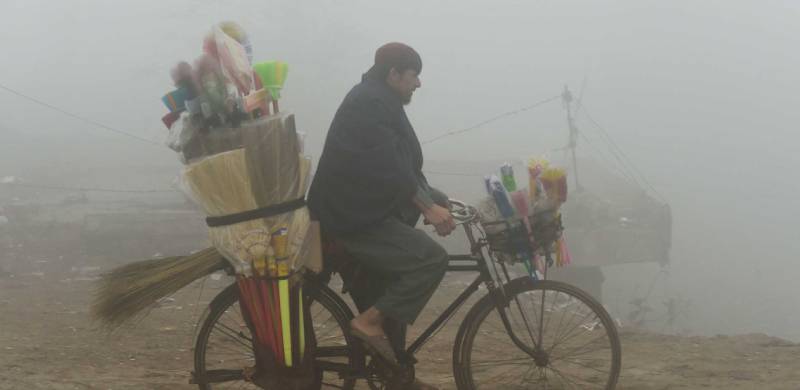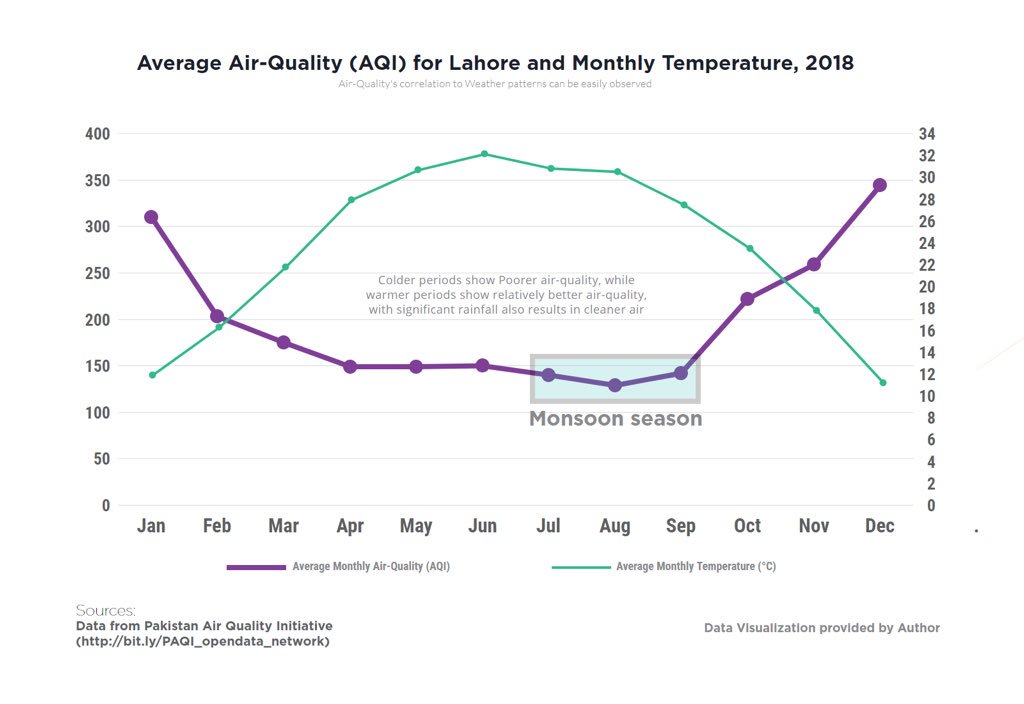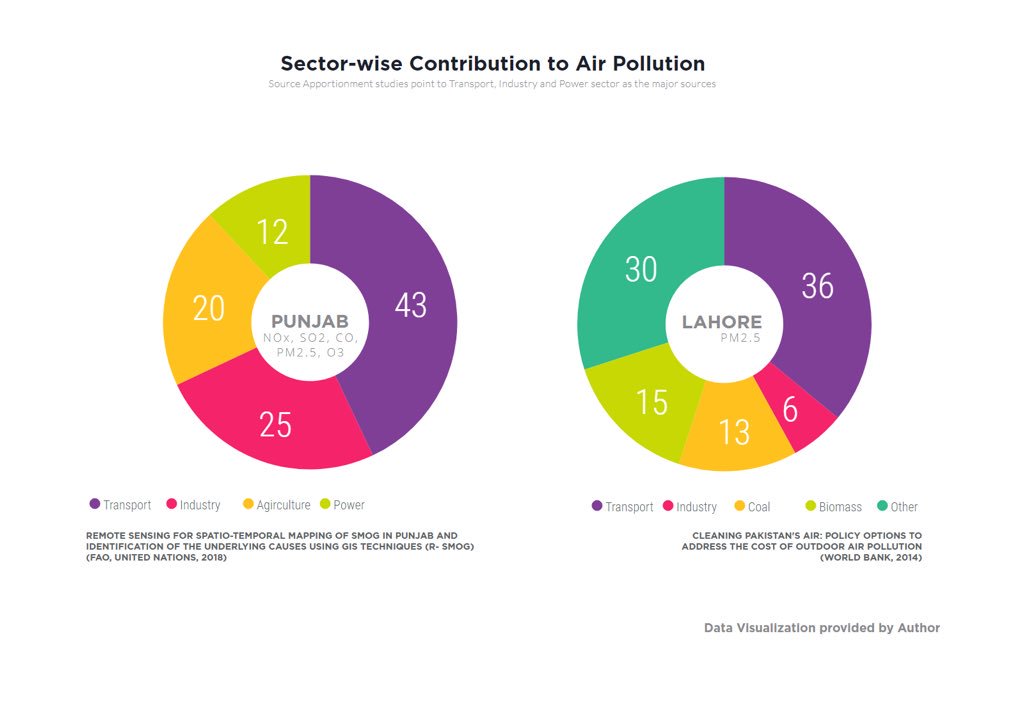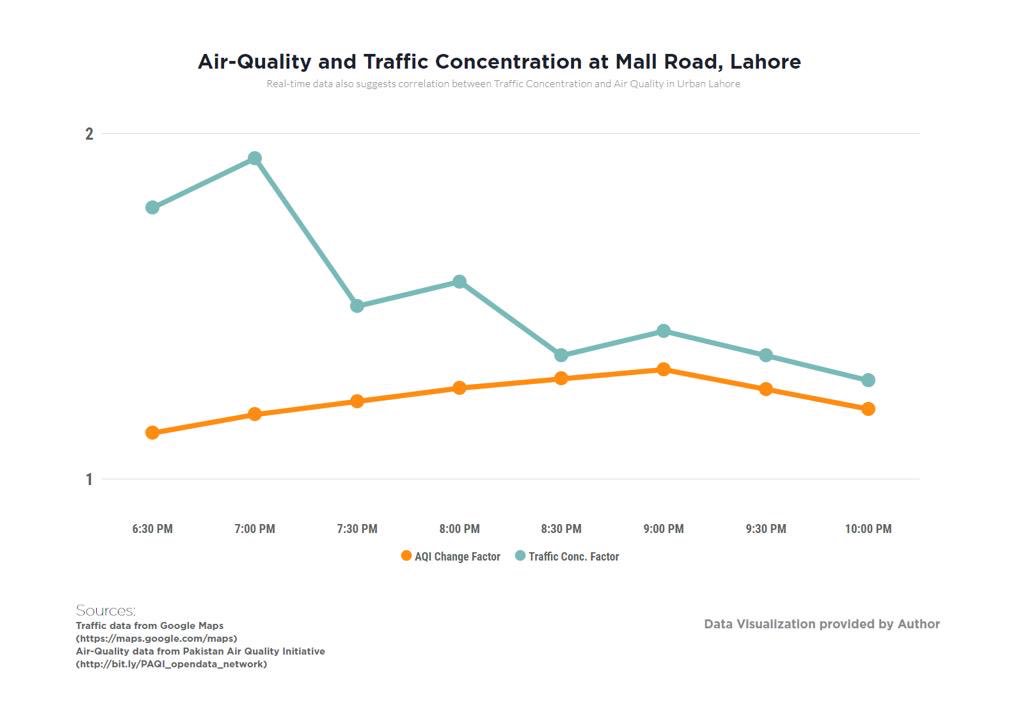
A recent study done by Public Policy analyst Dawar Butt reveals how Lahore’s air-quality is ‘unhealthy’ all-year-around, while the situation becomes worse in winters when the air quality becomes ‘hazardous’.
In a Twitter thread, Dawar shared statistics of a recently made presentation by him. Dawar said that lack of data and evidence regarding the air quality and growing air pollution is reason for public policy failure in Pakistan, which is second only to poor implementation.
https://www.youtube.com/watch?v=nYz3MhDyq8k
Air Quality Is ‘Hazardous’ During Winters
Dawar said that although Lahore’s air is polluted all-year-long, the situation gets worse in winters due to weather conditions.
“The complex relationship between Temparature, Relative Humidity, Wind and Rainfall is well-studied. It effects concentration of pollutants.”

One of the reason for this is that “in winters, more smoke is added to the atmosphere from things like fireplaces and wood stoves, and more idling cars lead to more carbon dioxide being pumped out of the exhaust”, shares an article published on FleetEvolution.
Major Sources Of Air Pollution Constant Around The Year
On why air pollution remains constant throughout the year, Dawar said that it is because the sources that lead to it are constant throughout the year too.

The main causes of air pollution, as he mentioned, were Transport, Industry and Power Generation. He also said that all of the three causes were using fuel quality which was ‘dirty’ and that was making the situation worse.
Traffic Concentration And Air Pollution
Dawar, with the help of some graphs, explained how traffic concentration was correlated to air quality index (AQI) in Lahore.

Times during the day when traffic was peaking, the AQI rose too and vice versa. This, he said, proved that a better management of traffic concentration could help reduce air pollution to an extent.
To 5 Most Affected Cities
The data and statistics presented, Dawar said, were simplified and that more research and data collection was needed into tackling the problem better.
https://www.youtube.com/watch?v=fPyP11Xac6I
Among the most affected cities in Punjab were:
He urged the government to look deeply into the matter and carve out solutions to counter the air pollution dilemma.
https://www.youtube.com/watch?v=qIHc0BtdR5U
According to the World Health Organization (WHO), over 4 million people die due to air pollution every year around the world.
In Pakistan, approximately 22 percent of deaths each year are caused by air pollution. Pakistan also ranks among countries which have increasing trends in PM2.5 exposure.
Have something to say about the story? Write in the comments section below
In a Twitter thread, Dawar shared statistics of a recently made presentation by him. Dawar said that lack of data and evidence regarding the air quality and growing air pollution is reason for public policy failure in Pakistan, which is second only to poor implementation.
https://www.youtube.com/watch?v=nYz3MhDyq8k
Air Quality Is ‘Hazardous’ During Winters
Dawar said that although Lahore’s air is polluted all-year-long, the situation gets worse in winters due to weather conditions.
“The complex relationship between Temparature, Relative Humidity, Wind and Rainfall is well-studied. It effects concentration of pollutants.”

Source: Dawar Butt
One of the reason for this is that “in winters, more smoke is added to the atmosphere from things like fireplaces and wood stoves, and more idling cars lead to more carbon dioxide being pumped out of the exhaust”, shares an article published on FleetEvolution.
Major Sources Of Air Pollution Constant Around The Year
On why air pollution remains constant throughout the year, Dawar said that it is because the sources that lead to it are constant throughout the year too.

Top causes of air pollution in Lahore and Punjab. (Source: Dawar Butt)
The main causes of air pollution, as he mentioned, were Transport, Industry and Power Generation. He also said that all of the three causes were using fuel quality which was ‘dirty’ and that was making the situation worse.
Traffic Concentration And Air Pollution
Dawar, with the help of some graphs, explained how traffic concentration was correlated to air quality index (AQI) in Lahore.

Air-Quality and Traffic Concentration at Mall Road. (Source: Dawar Butt)
Times during the day when traffic was peaking, the AQI rose too and vice versa. This, he said, proved that a better management of traffic concentration could help reduce air pollution to an extent.
To 5 Most Affected Cities
The data and statistics presented, Dawar said, were simplified and that more research and data collection was needed into tackling the problem better.
https://www.youtube.com/watch?v=fPyP11Xac6I
Among the most affected cities in Punjab were:
- Lahore
- Gujranwala
- Faisalabad
- Multan
- Sargodha
He urged the government to look deeply into the matter and carve out solutions to counter the air pollution dilemma.
https://www.youtube.com/watch?v=qIHc0BtdR5U
According to the World Health Organization (WHO), over 4 million people die due to air pollution every year around the world.
In Pakistan, approximately 22 percent of deaths each year are caused by air pollution. Pakistan also ranks among countries which have increasing trends in PM2.5 exposure.
Have something to say about the story? Write in the comments section below
